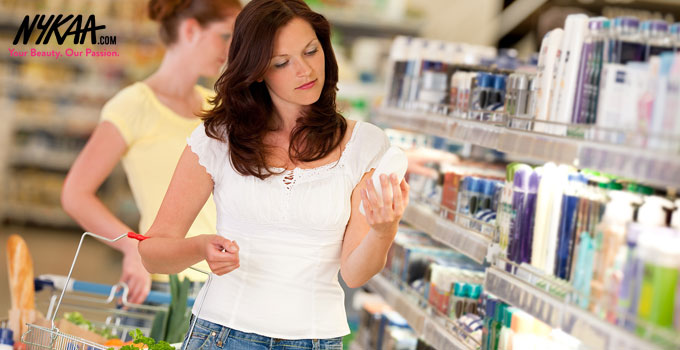Seven common ingredients that you should give a miss
Did you know an average woman uses up to 15 cosmetics—from skin and hair products to makeup and fragrances—every day? There’s no dearth of scary toxins floating around. From Pthalate, Lead and Paraben to SLS, SLES, and Oxybenzone, there’s no dearth of doubtful beauty ingredients. In fact an Environmental Working Group report says that 89 percent of 10,500 ingredients used in personal care products haven’t been evaluated for safety by the FDA. Since 60 percent of what we put on out skin gets absorbed into the bloodstream, it’s time you sat up and took note of some of the top beauty ingredients you should give a miss.
Formaldehyde .
Used as a disinfectant and preservative in several beauty products including nail polish, soap, deodorant, shaving cream, eyelash adhesive and shampoo, formaldehyde has been banned by the European Union because of its potential health risks. Formaldehyde exposure has been linked to breathing difficulties, eye irritation and cancer among other conditions. It’s a common ingredient in hair straightening formulas says hair stylist Teresa Chen. “At my salons we no longer use these. For poker straight hair it’s far safer to use straightening irons,” she says. Nykaa recommends Remington S8670 Multistyle Hair Straightener.
Oxybenzone .
A common ingredient in chemical sunscreens, Oxybenzone has been linked to fertility problems, and obesity by the US based Environmental Working Group. Today there are plenty of oxybenzone-free, physical or mineral-based alternatives. Check out Avene Very High Protection Spray SPF 50+
, Neutrogena UltraSheer Body Mist SPF 30 or Nivea UV Protection Lotion
Parabens .
Parabens are a group of compounds commonly used as a preservative in cosmetics to increase their shelf life. In fact, more than 80 percent of common beauty products contain parabens, from lotions and lipsticks to skin creams and shampoo. Parabens have been linked to tumors, breast cancer, weight gain, birth abnormalities and even depression. “That doesn’t mean you should bin all your cosmetics just yet,” says Nykaa skin expert, Dr. Dhimant Goleria. He suggests you use your fave beauty brands but switch to some paraben-free, natural formulas of skin, hair and bath and body products for daily use. Nykaa recommends the bath and body, skin and hair range from Khadi, luxury offerings from L’Occitane and the Chicco baby range.
Phthalates .
This is a group of chemicals commonly added to increase the shelf life of cosmetics. While it's commonly listed as an ingredient in nail polishes to make them less brittle, they are also commonly used in fragrances, shampoos, hairsprays and other cosmetics. While phthalates are suspected to cause hormonal imbalances, this has not been proved, says Dr. Goleria, and more studies need to be done to conclude they are harmful to humans.

Triclosan .
Triclosan is an antibacterial and antifungal that’s commonly added to soaps, body washes, toothpastes and deodorants. It has been linked to hormonal imbalances, developmental disturbances and liver toxicity. The Environmental Working Group, the U.S. FDA advisory committee has concluded that soaps and hand washes with triclosan don’t have any benefits over plain soap and water. Therefore, it’s best to avoid hand and body washes listing triclosan as an ingredient. Always read ingredient labels and pick brands like H20+ and Sebamed that don’t contain it.
SLS/SLES .
Sodium Lauryl Sulfate (SLS) and Sodium Laureth Sulfate (SLES) are popular foaming agents used in shampoos, toothpaste, lotions and creams. Studies have revealed these can cause eye damage, depression, and scalp and skin irritation. A dental association in Japan revealed that SLS can even alter the genetics in cells. Nykaa recommends that you read labels carefully and opt for brands that clearly state "SLS/SLE free" in the list of ingredients. For instance, Sebamed, Himalaya Herbals, Lotus Herbals and Vaseline products are free of SLS and SLES.
Lead .
It’s a soft metal used in the coloring dye for lipsticks. A lead overdose has been linked to brain, nervous system disorders and blood disorders. In 2011 the FDA reported that 400 popular lipsticks contained lead but the levels were too minute to be harmful, just above 1 part per million. Dr. Goleria says that it’s important to note that lead per se is not used in lipstick, it’s just a trace byproduct of the pigments used to color lipsticks. So what’s a girl who loves her lippie to do? “Use it but with caution. Reapply only twice or thrice through the day,” he concludes.

